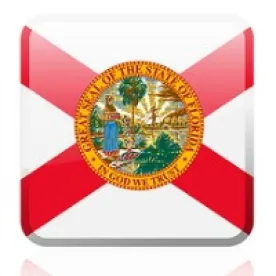A "shelter in place"/"stay at home" order may be imminent for all of Florida or at least certain Florida counties/municipalities within the next 24–72 hours, and any such order will likely impact the operations of many businesses in our community. Although we have not seen proposed language of any such order(s) in Florida, our firm has been engaged by clients to analyze and advise concerning the “shelter in place” Orders issued by other jurisdictions, including those issued by the Governors of California, New Jersey, Illinois, Ohio, and Louisiana and various municipalities. Although the language of each of these Orders is different—and the effect on a certain business in one jurisdiction may be different than the effect on that business in another—these Orders do have common themes that could help predict the manner in which Florida businesses will be impacted.
First, each such Order prohibits the continued operation of “non-essential” (often retail) businesses where the working environment is seen as likely to increase the spread of the COVID-19 virus. Examples of such businesses include typical “brick and mortar” establishments where close human contact or density is significant (for example, recreational businesses, entertainment businesses, gyms, fitness centers, many service-based establishments, bars, dine-in restaurants, social clubs, and retail shopping). However, each of the previously issued Orders also exempts certain “essential businesses ” from closure based primarily on two factors:
(1) Whether the businesses are essential to the provision of medical supplies or products/services needed by citizens in their everyday lives (hospitals, pharmacies, grocery stores, gas stations, etc.); and
(2) Whether the businesses are involved in “critical infrastructure,” including those that are part of the supply chain or network for related products and services—such as manufacturing, distribution, heavy construction, shipping, food production or delivery, and certain repair businesses.
Online or remote businesses have also been allowed to operate given the low risk of disease transmission.
Concerning “critical infrastructure” businesses, one or more of the “shelter in place” Orders has specifically referenced the March 19, 2020 Memorandum on Identification of Essential Critical Infrastructure Workers During COVID-19 Response issued by the U.S. Department of Homeland Security (the “DHS Memo”). The DHS Memo identifies “critical infrastructure” businesses that the DHS considers essential to continued critical infrastructure viability, including:
(1) Manufacturers and distributors of medical equipment;
(2) Those engaged in the manufacture and maintenance of equipment and other infrastructure necessary to agricultural production and distribution;
(3) Businesses supporting the operation, inspection, and maintenance of essential public works facilities and operations, including bridges;
(4) Industries necessary for the manufacturing of materials and products needed for medical supply chains, transportation, energy, food and agriculture, water and wastewater treatment, and the defense industrial base;
(5) Companies, and their subcontractors, who perform under contract to the Department of Defense providing materials and services to the Department of Defense;
(6) Call centers;
(7) Certain construction businesses;
(8) Warehouse businesses;
(9) Transportation businesses; and possibly other businesses.
In addition, the Orders consistently suggest or require that even if businesses are considered essential or are not required to shutter, they must follow CDC/OSHA guidelines concerning social distancing and protection of employees from infection to the maximum extent possible. For example, the New Jersey Order suggests that employers must, if possible, provide for telework or work-from-home arrangements, and that best efforts should be made to reduce on-site staff to the minimal number necessary for “essential operations.” The Illinois Order provides that “[t]o the greatest extent feasible, Essential Businesses and Operations shall comply with Social Distancing Requirements,” outlining such requirements including:
(1) Designating with signage, tape, or by other means six-foot spacing for employees and customers in line to maintain appropriate distance;
(2) Having hand sanitizer and sanitizing products readily available for employees and customers;
(3) Implementing separate operating hours for elderly and vulnerable customers; and
(4) Posting online whether a facility is open and how best to reach the facility and continue services by phone or remotely.
Even if a business is not closed, a “shelter in place” order could have significant impact on business operations. We obviously cannot predict with precision what businesses will be impacted by a possible “shelter in place” order affecting our Florida communities. However, the guidance above does suggest what may occur given the Orders put in place by other jurisdictions


 />i
/>i

